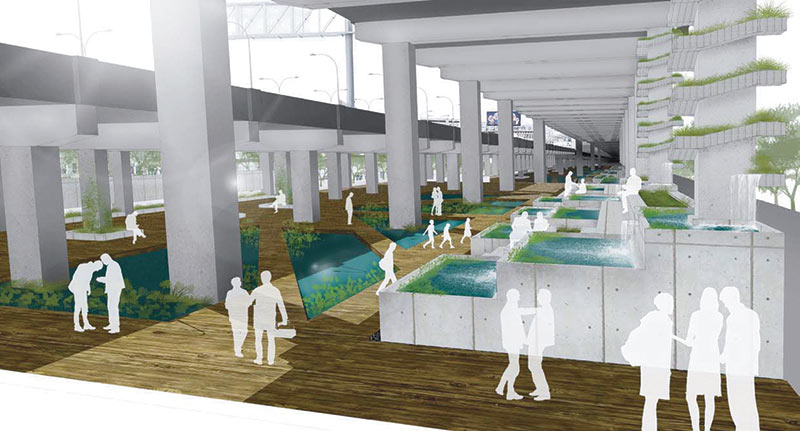
In the year since AN covered plans for a Seattle eco-district—a sustainability framework in the city’s Capitol Hill neighborhood—other cities from coast to coast have discussed and proposed similar ideas. San Francisco, for one, is examining the incorporation of four types of eco-districts into various zones and neighborhoods, seeking to find environmentally friendly solutions to energy demands, pollution, and overcrowding.
In SF’s South of Market (SoMa) area, the major effort is called the Central Corridor Eco-District, which will entail a unified approach through transit-oriented development with upzoning and increasing height allowances, as well as energy, water, waste, and green space management. The scope is a roughly 20-square-block area bordered by Mission Street to the north, 2nd Street to the east, Townsend Street to the south, and 6th Street to the west.
|
|
||
As part of the project, the modified zoning would add office space for more than 19,000 workers and 8,000 housing units, intersected by the under-construction Central Subway extension of the Muni Metro. The eco-district is classified as Type Two, or “The Patchwork Quilt,” for its mixture of undeveloped and developed land and range of property use.
While the idea of district-wide sustainability is not new, SF’s proposal takes a holistic approach, unifying critical urban infrastructure, including transportation, human networks, resources, and materials. Advocates claim that, with the district in place, SoMa will be able to take more proactive, deliberative measures to push efficient and effective sustainable solutions. Aggregated resource demands could provide opportunities for a more unified distribution system for water and energy. For example, one property owner could use the recycled wastewater from another property with an onsite water filtration system, or group purchasing could help bring costs down for installing solar systems.
“In a city where neighborhood edges are somewhat blurry, why focus on sustainability at this scale instead of an ‘all-of-the-above, everywhere’ approach?” said Laura Tam, sustainable development policy director at the San Francisco Planning and Urban Research Association.
While the district is currently in the community and stakeholder outreach phase, last summer a group of seven landscape architecture graduate students working with Sausalito-based landscape architecture firm SWA Group put forward several design ideas for the district. One student proposed a pedestrian and bicycle only street. Another envisioned a storm water collection system as a water park under Highway 80. A third imagined a fence of reused ceramic roof tiles as a sculptural water filter.
Implementation of the Central Corridor Eco-District plan is expected by late 2014.